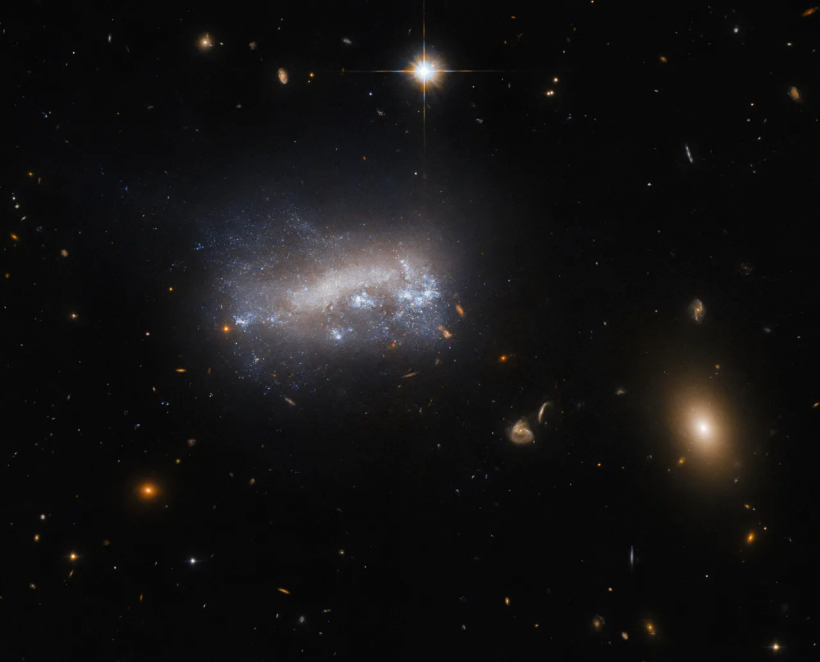The NASA/ESA Hubble Space Telescope has captured LEDA 42160, a dwarf galaxy, forcing its way through the comparatively dense gas in the massive Virgo cluster of galaxies.
A Galaxy Under Pressure
Positioned some 52 million light-years from Earth in the constellation Virgo, this galaxy is experiencing the effects of ram pressure exerted by the surrounding intergalactic gas, resulting in notable impacts on its star formation processes.
Ram pressure, a phenomenon caused by the resistance encountered by a galaxy as it moves through space, can have both positive and negative effects on star formation, according to NASA.

(Photo : ESA/Hubble & NASA, M. Sun)
It can strip a galaxy of its star-forming gas and dust, hindering the creation of new stars. It can also compress the gas within the galaxy, potentially triggering increased star formation activity.
The recent observations of LEDA 42160 are part of a broader project focused on studying dwarf galaxies undergoing ram pressure stripping within large galaxy clusters like the Virgo cluster.
By examining the impact of ram pressure on smaller galaxies such as LEDA 42160, astronomers hope to gain insights into the mechanisms driving star formation in these unique environments.
Notably, the bright patches visible on LEDA 42160's lower-right side may indicate regions where star formation has been stimulated by ram pressure stripping.
Read Also: NASA's Picture of the Day: Jupiter Looking Sharp in These Breathtaking New Rooftop Telescope Images
Hubble Peers into the Tumultuous Weather of Jupiter
The Hubble Space Telescope has also turned its gaze towards Jupiter, capturing images that provide a detailed glimpse into the gas giant's dynamic weather patterns.
These images, taken as part of the Outer Planet Atmospheres Legacy program, showcase Jupiter's iconic features, including the Great Red Spot and its smaller counterpart, Red Spot Jr.
The Great Red Spot, a massive storm with crimson-colored clouds swirling counterclockwise, dominates the left side of Jupiter's atmosphere. Adjacent to it lies Red Spot Jr., a smaller anticyclone whose reddish hue fluctuates over time.
Both features are a testament to the planet's tumultuous atmospheric dynamics, offering valuable insights into the behavior of Jupiter's weather systems.
In addition to these well-known storm systems, the images also reveal the presence of other atmospheric phenomena, including a pair of storms characterized by deep red coloration.
These storms, rotating in opposing directions, underscore the complexity of Jupiter's weather patterns and the intricate interactions between its atmospheric components.
The left side of the image captures the presence of Io, the innermost moon discovered by Galileo Galilei. Despite its modest dimensions, Io stands out as the most volcanically active celestial body within our Solar System.
Hubble's meticulous observations unveil deposits of volcanic outflows dotting Io's surface, showcasing the moon's ever-changing geological landscape. By leveraging its sensitivity to blue and violet wavelengths, the telescope offers a vivid depiction of Io's surface features, continuing the tradition of exploration pioneered by NASA's Voyager 1 spacecraft back in 1979.
Related Article: NASA's Hubble Space Telescope Captures 'Butterfly Nebula' In Stunning Motion | Fun Facts About This Beautiful Space Butterfly









